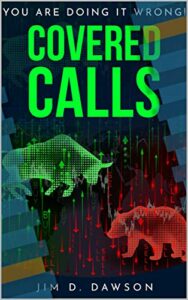10 Things to Consider When Creating Content for Your Website
When you meet someone for the first time, it only takes three seconds for that person to form an opinion about you. This goes for your website too. A few seconds is all you have to convince your audience to continue engaging with your website’s content.
The internet contains a countless number of websites, all of which are competing for users’ attention. Your web content — and your web copy — must beat that competition and convince audiences to invest their time in you.
Content strategy is a powerful tool that may help you attain your online objectives. A proper content strategy may help you create a website that captures interest and is memorable and innovative. This requires skills and ideas to create content. The quality of your strategy may determine whether it will lead to solid and captivating content or a tepid website.
Here are some ideas and concepts to help you create effective content for your website:
1. Determine Your Value Proposition
Value proposition is the promise you make to your audience about what you can deliver or what they can experience if they engage with you. Suppose you are planning to create a website that offers fashion advice to users. Your fashion advice would be your value proposition to target users.
Your content must be relevant and specific to your niche. This means that you should not deviate from your value proposition. A website known for fashion may do itself a great disservice if it offers content about politics, sports, or other topics that do not relate to fashion.
It is imperative that you identify a unique value proposition that sets you apart from other websites. That proposition should be consistent throughout your content.
2. Find Your Content Niche
The internet contains virtually everything about everything. There is a good chance that other websites will discuss your area of interest. Some people may quit ventures if they find that their markets are already flooded. But, this could be more reason to enter those markets.
It is essential to recognize and address content gaps in your niche. While the internet might have several websites on a subject, the content about that subject matter may be incomplete. Recognizing gaps in content may help you determine what you need to rewrite, refresh, or remove.
3. Get Creative with Your Content
A memorable website requires remarkable content, yet remarkable content is the product of creative ideas. One way to improve the quality of your content is to read widely to refine your ideas. Books, sites, and other sources relevant to your niche may help you develop creative and provocative ideas for your website.
Besides using books, sites, and outside sources, your creativity also depends on your drive to improve. For instance, developing a website with content on physical fitness may drive you to become more innovative about the content you publish. You may end up developing new solutions to problems as you master your trade. Through constant practice and engagement with your audience, you may learn new ways to engage your audience more effectively.
4. Work with the Right People
Beginners who are developing content for their website may want to study other people for inspiration. Engaging in conversations and discussions about content can be a powerful way to improve creativity and source ideas. Joining groups or working with advisors are practices that can benefit your website.
Website owners looking to revamp their content may experience writer’s block and may assign employees to create content. Or, they may consider hiring a dependable freelance agency or content creators to help with their websites.
While working with people, you may experience inconsistency and unaccountably. It is imperative, therefore, to define your responsibilities and expectations when you are working with third parties.
5. Fulfill Your Audiences’ Needs
Assumptions can hinder the creation of effective websites that meet their audiences’ needs and interests. The cases of Yahoo and Google offer important lessons why you should not make assumptions about your audience.
Google has understood the significance of informing audiences about its mission and vision. Yahoo has struggled with offering such information about itself. Yahoo assumed that customers already knew about the site and what it represented. It assumed that modernity, sophistication, and novelty drive brands in a tech-savvy generation. While this might be true, Google seemed to better understand its customers’ preferences for functionality instead of style.
Yahoo and Google demonstrate that you should focus on people and their needs, not trends and self-serving strategies. Tailoring content with your audience in mind strives to meet their needs, answer their questions, address their pain points, or educate them. Addressing your audience effectively is where the strength of your website lies.
As someone who writes for a behavioral center, knowing the audience and what they want to know and or learn is essential.
6. Meet Your Customers Where They Are
Is your intention to sell products, create awareness through advocacy, or provide information about a specific topic on your website? You may be developing a website to gain influence, increase sales volume for your company, or build awareness about social justice causes. Regardless of these intentions, reaching your audience is the end goal.
Depending on the type of website you wish to build, mapping your content enables you to focus on achieving your prospects. As they progress through the sales funnel (the process where interested potential customers move toward becoming actual committed customers), consumers will have different needs and concerns depending on where they are on that funnel.
In the beginning of the process, you need to make prospective customers aware of you and what you do. Your website should answer general questions about what you sell or what services you provide.
As they progress through the sales funnel, customers who return to your website should encounter content that makes the purchase process easy. Following purchase, your website should offer content that encourages customers to evaluate your work and provide feedback, such as testimonials.
7. Develop a Solid Site Map
Content is more effective if it is complete. Your audience will encounter your website at different parts of the sales funnel, from the moment of discovery to purchase and evaluation. This compels you to provide content that answers customer questions and meets their needs at different points of contact.
Exhaustive site maps ensure that your content is as complete as possible. Using tools increases your chances of engaging with your audience. Some basic yet vital components to add to your website include premium content, products/service information, blogs, testimonials, case studies, informative “about” pages, portfolios, information about people (organizational structure), frequently asked questions pages (FAQs), and contact information.
For many businesses and organizations with websites, the “about” page may be a good tool to promote strategy. On this page, you can include your mission and vision statements and describe your values. In addition, a brief history of your venture can enrich your audience’s relationship with your website and organization.
8. Write Solid Web Copy
Strong web copy and metadata are your allies. Metadata is text on your website’s homepage that describes your page and its contents. Web copy typically guides users through your website. Strong copy may keep readers engaged so you can promote or sell whatever you are offering.
Determine the length of your web copy by considering the purpose of your website and its general message. A 300-word limit is largely accepted as a standard.
To write effective web copy, consider using stories, fun facts, statistics, quotations, and research findings to make things more interesting. Fascinating copy has a better chance of capturing — and keeping — the attention of readers.
Pay attention to how your copy looks and sounds. Do not derail the impact of your web copy by committing punctuation and spelling errors. Offer this content in easy-to-read formats. Your readers will thank you.
9. Appreciate Language and Tone
One challenge when starting to write content is deciding what language and tone to use. This task becomes even more complex as you gain audience members. Different people reading your content may approach language and tone differently. But, do not worry too much about this, because few people ever have uniform audiences.
It is still important to tailor your content based on the nature of the audience you are targeting, though. A website about relationships may use language and tone differently from a website that discusses crime, for example. Or, websites about technology may use technical terms. Using the same technical language on websites about love and relationships, meanwhile, may not attract or keep readers.
10. Monitor the Effectiveness of Your Content Strategy
As a content creators, you must strive keep your content strategy relevant and your audience engaged. Facts about content and customer needs are prone to change. Such is the volatility of society and human nature. Commit to stay above the wave of change by monitoring and evaluating your content constantly.
You will perform better when you update your content and are responsive to changes in users’ online interactions. Solid web content is not enough. Strive to generate content that is fresh, relevant, and conscious of current trends. Innovation will help increase traffic on your website and help you rise above your competitors.
BIO:
Charles Watson is the current head writer for the Sunshine Behavioral Group. While writing about addiction,  he also enjoys putting together a good article on the basics of writing itself. He can be reached directly on Twitter at @charleswatson.
he also enjoys putting together a good article on the basics of writing itself. He can be reached directly on Twitter at @charleswatson.
READ NEXT: How to Create Content for Your Website without Creating it!
Check out our YouTube Channel for lots of videos from our website topics. Don’t forget to Subscribe!



